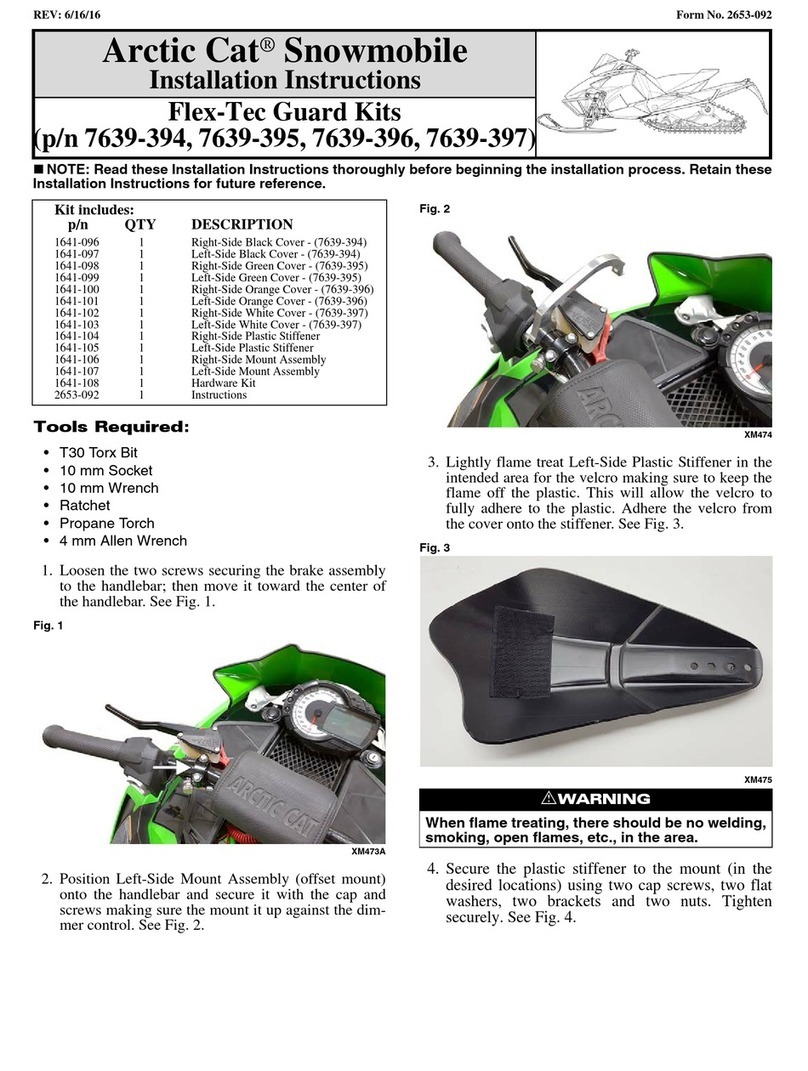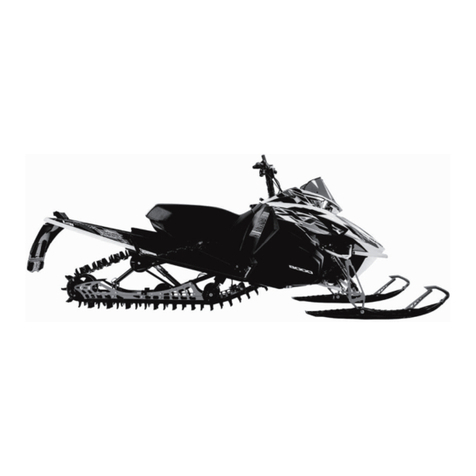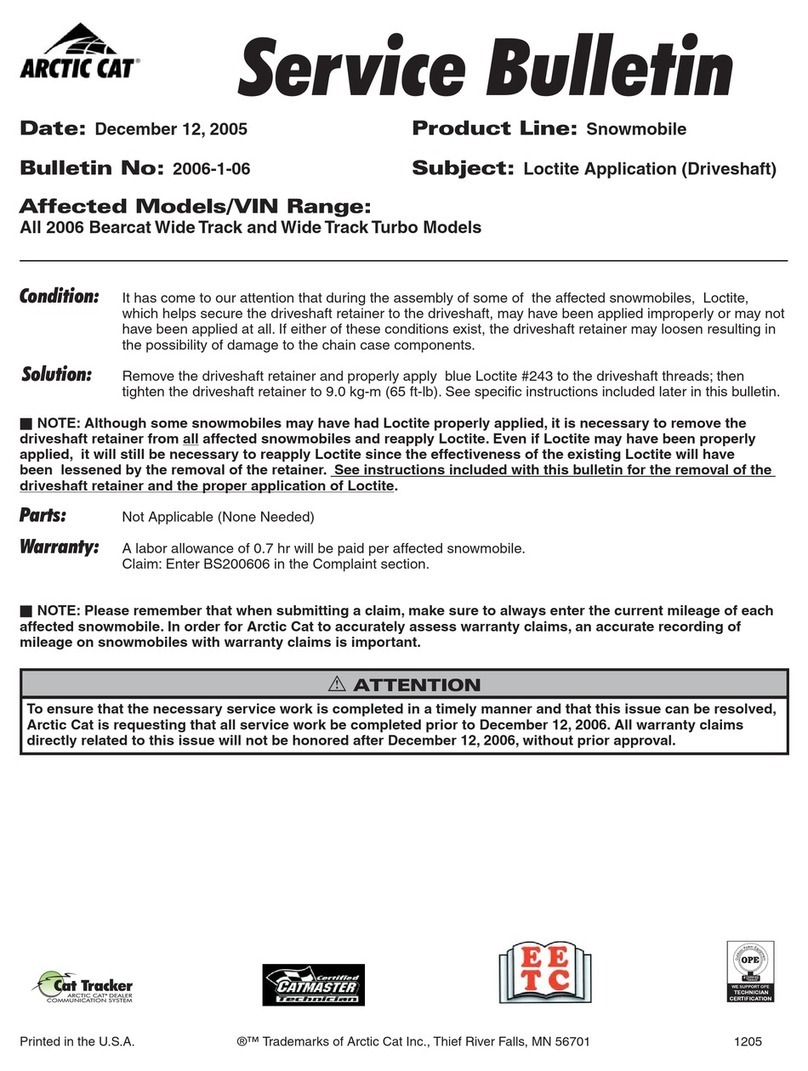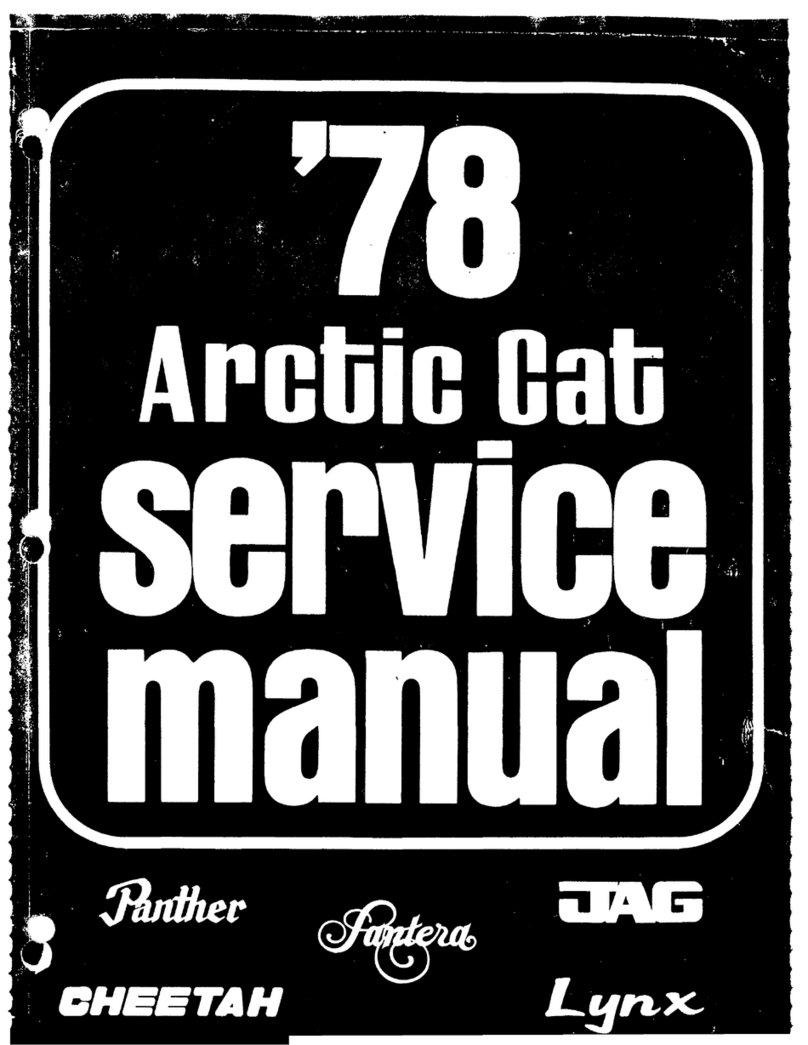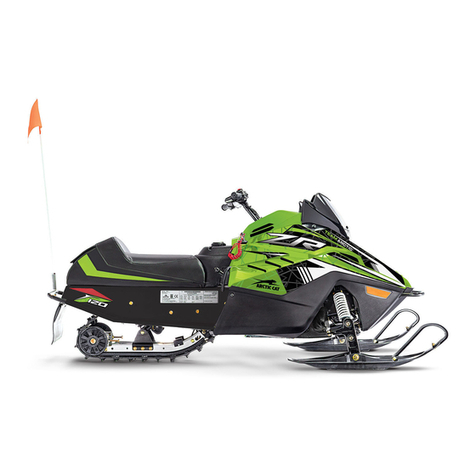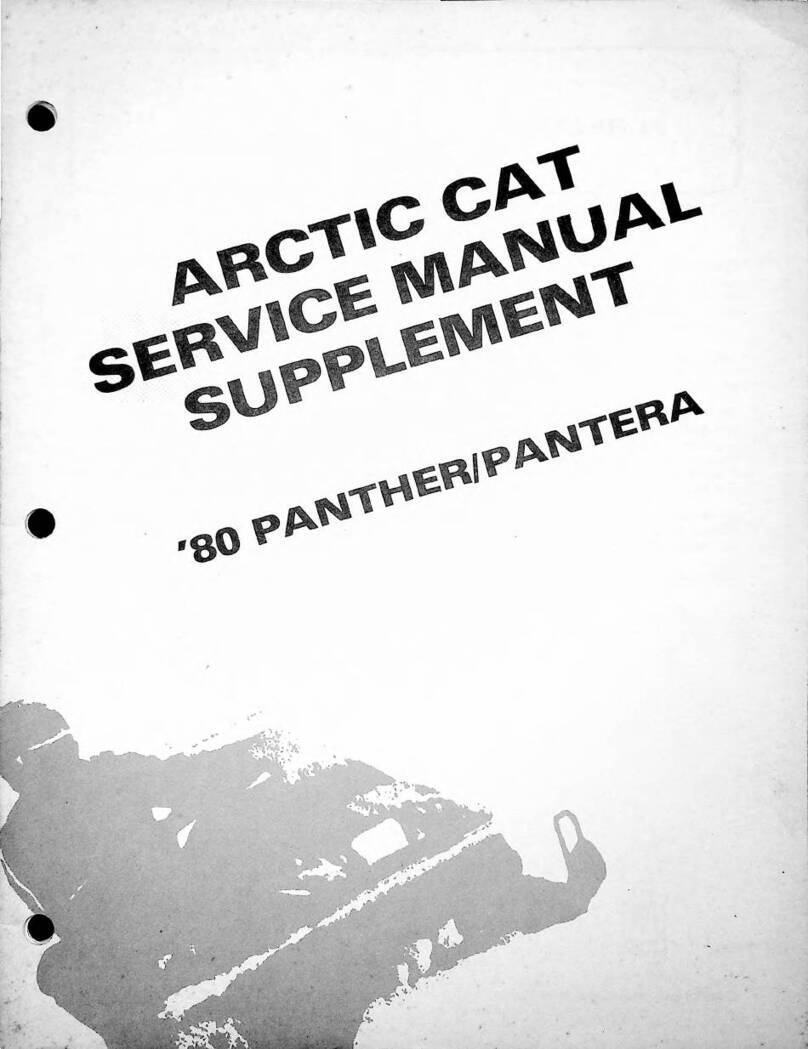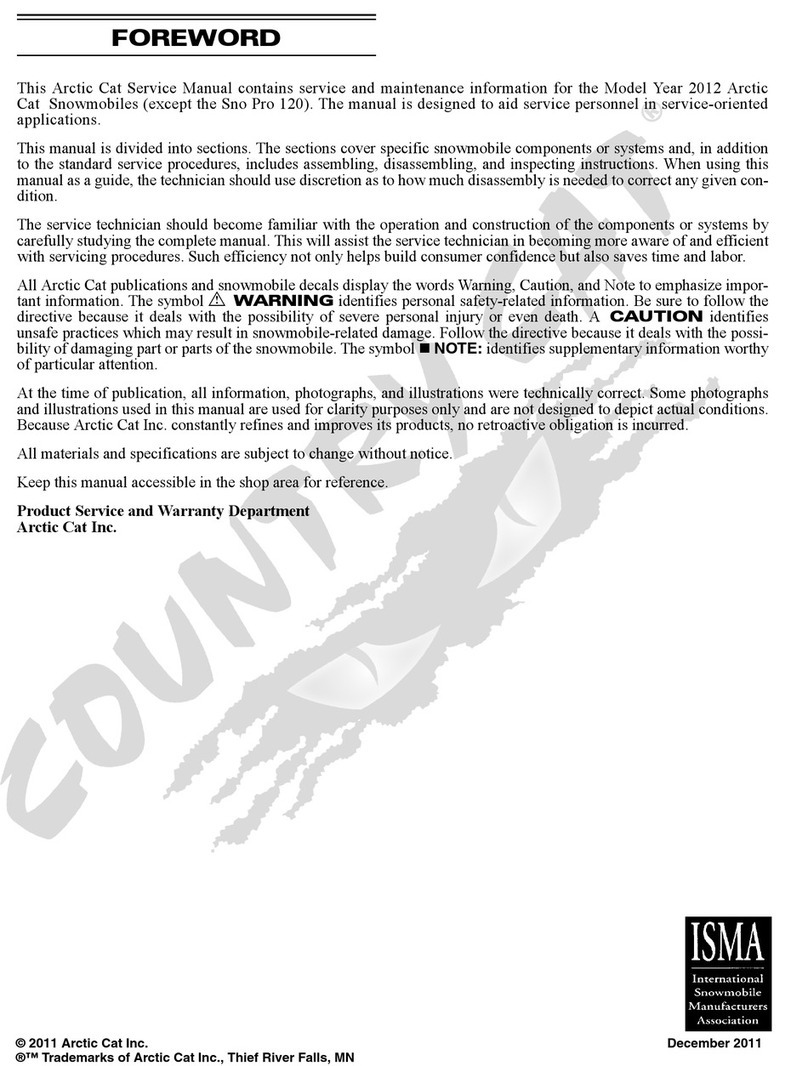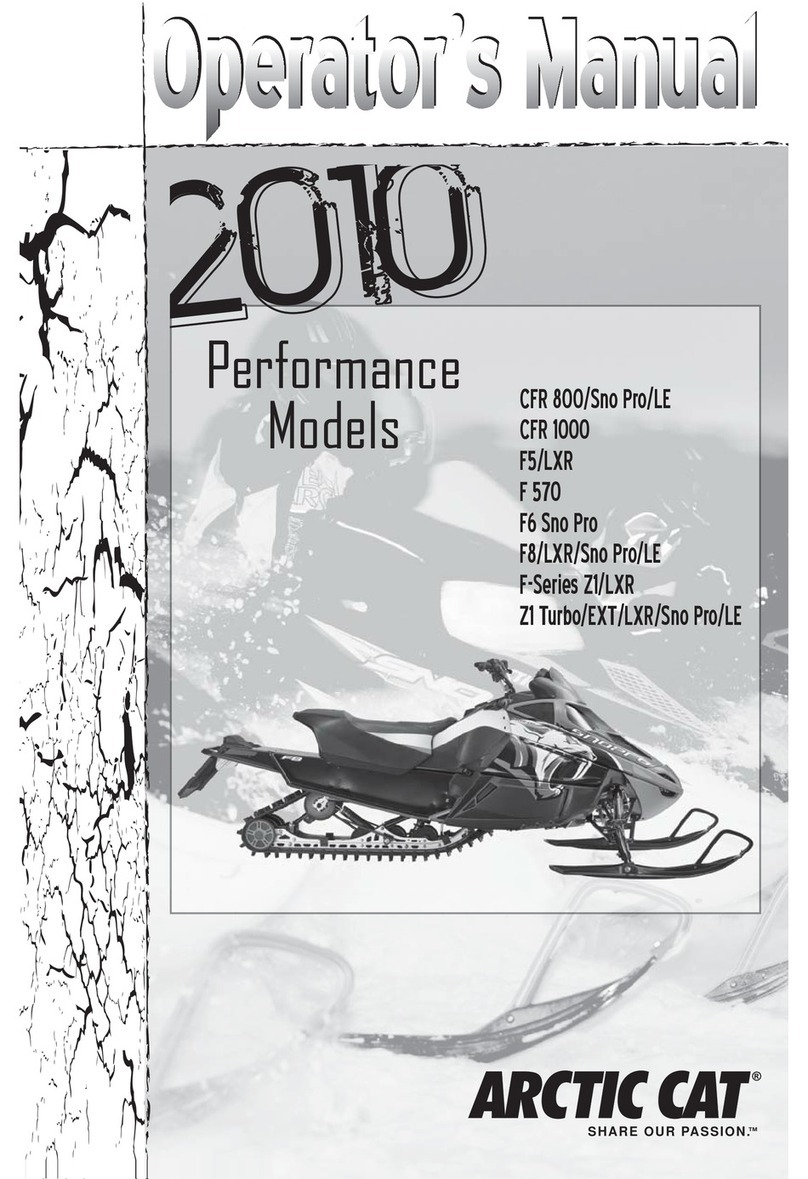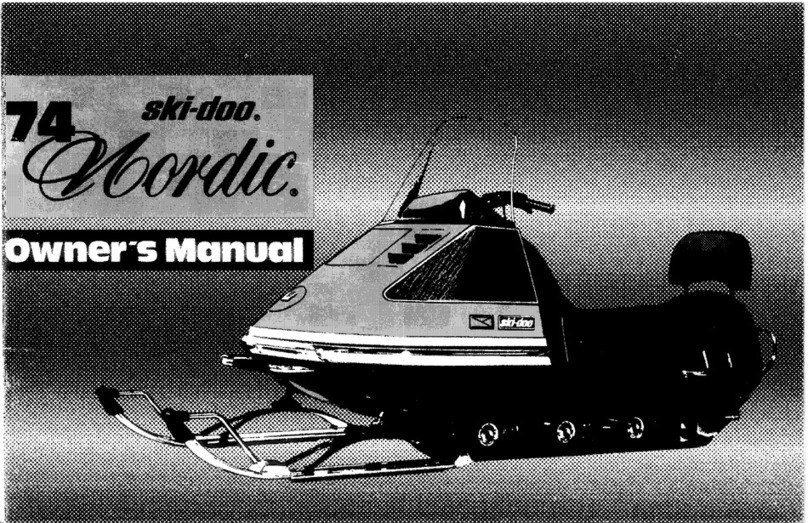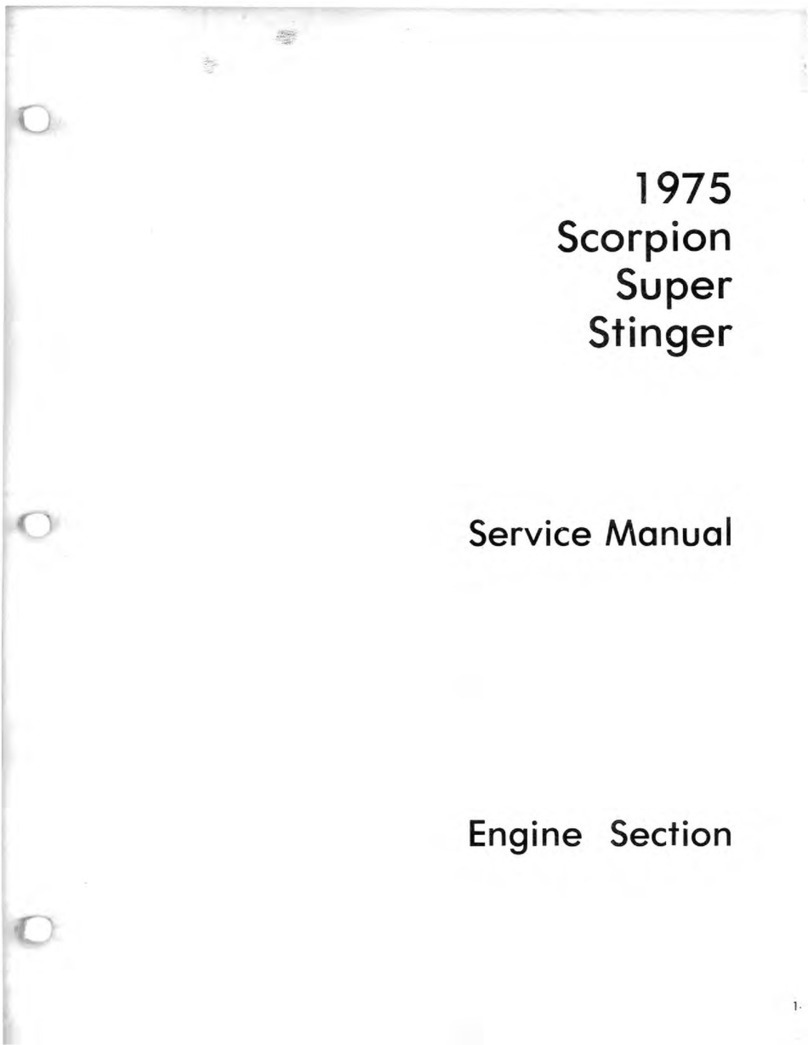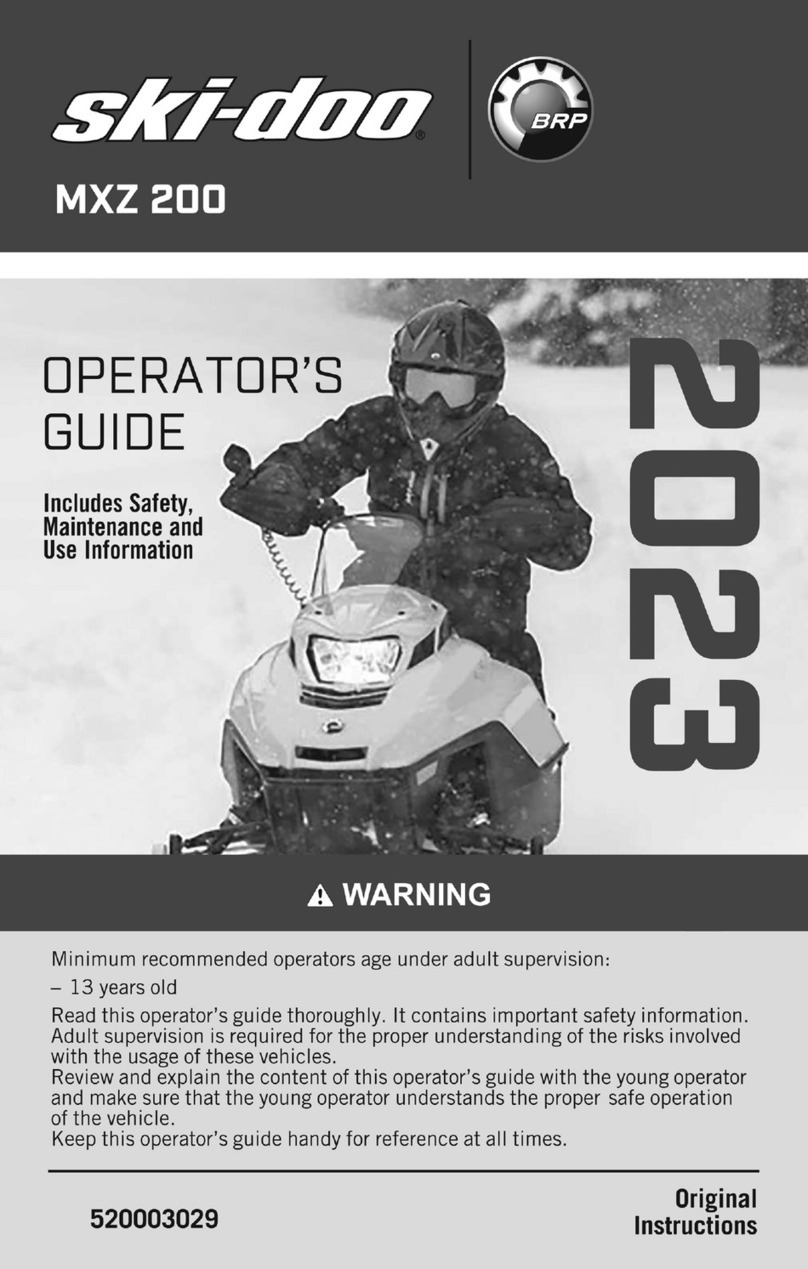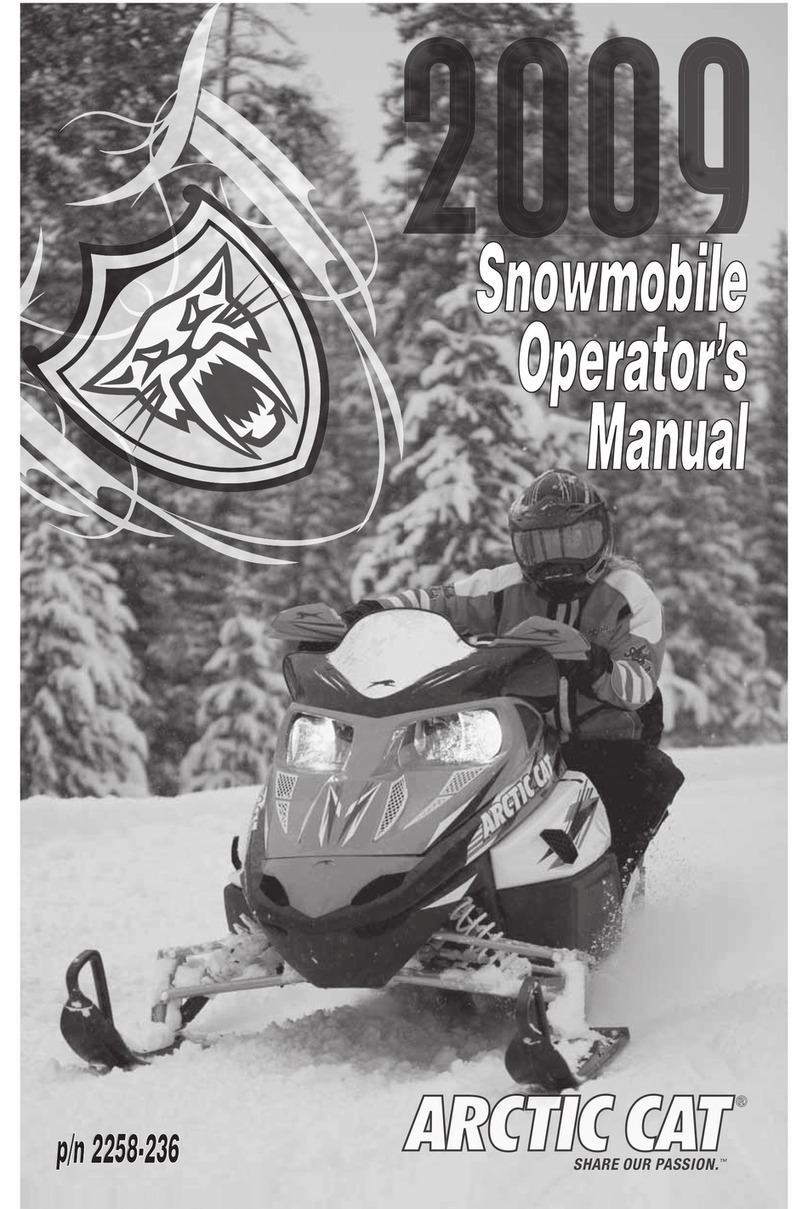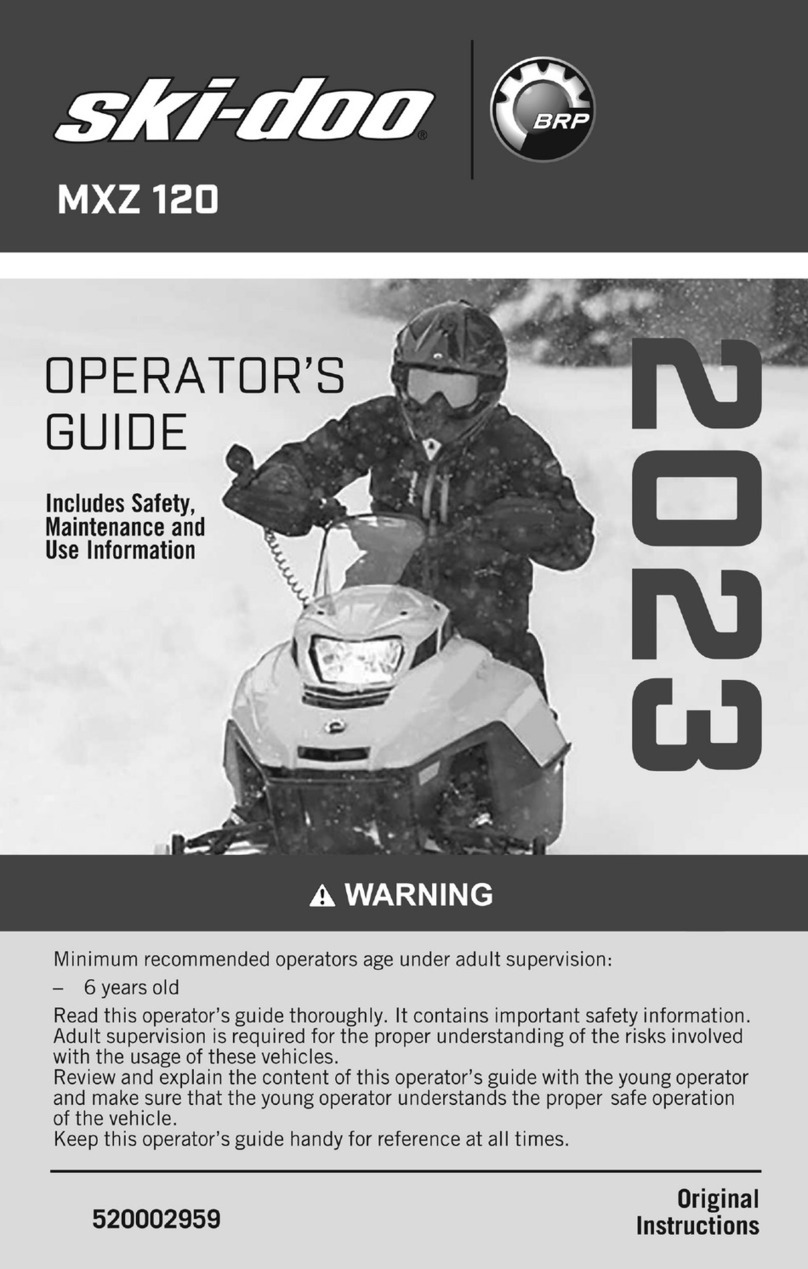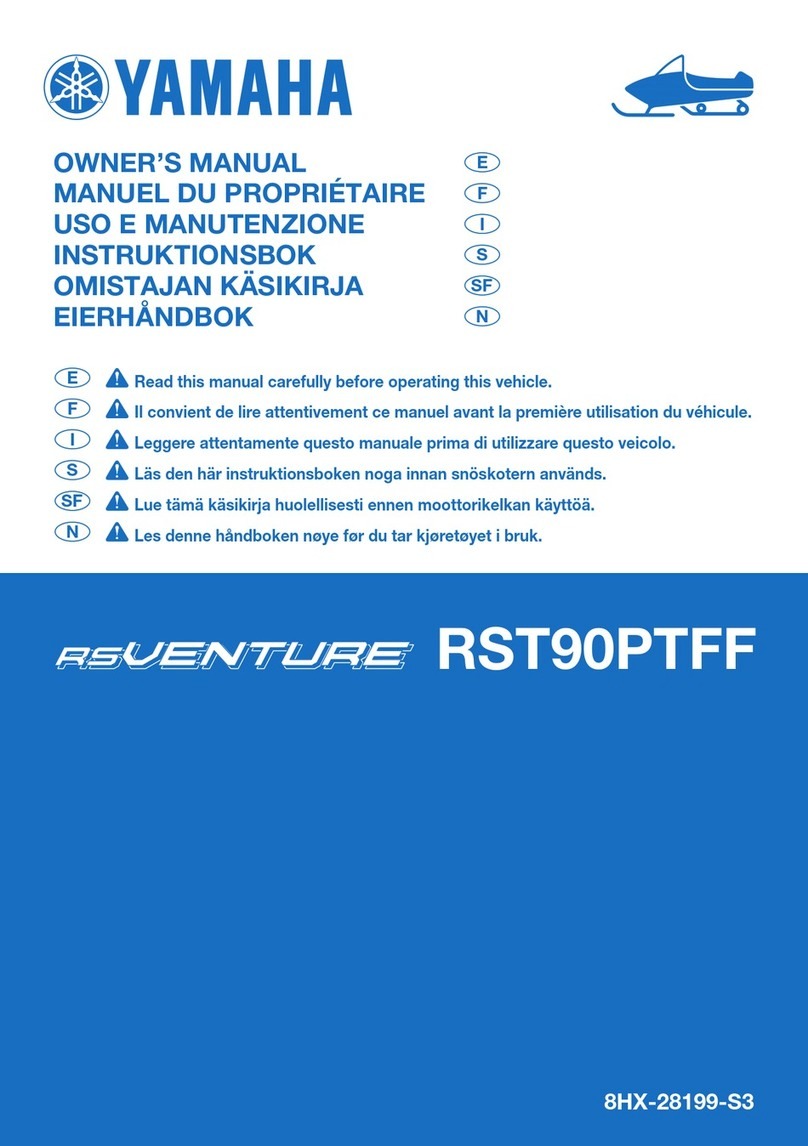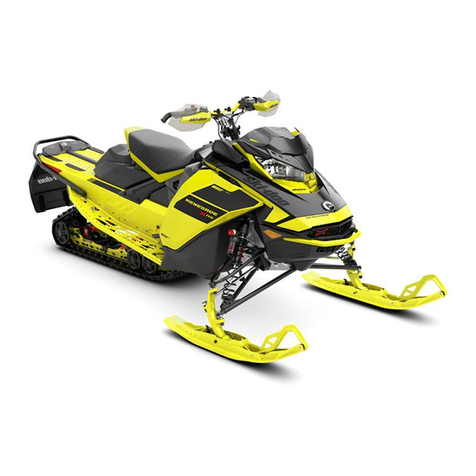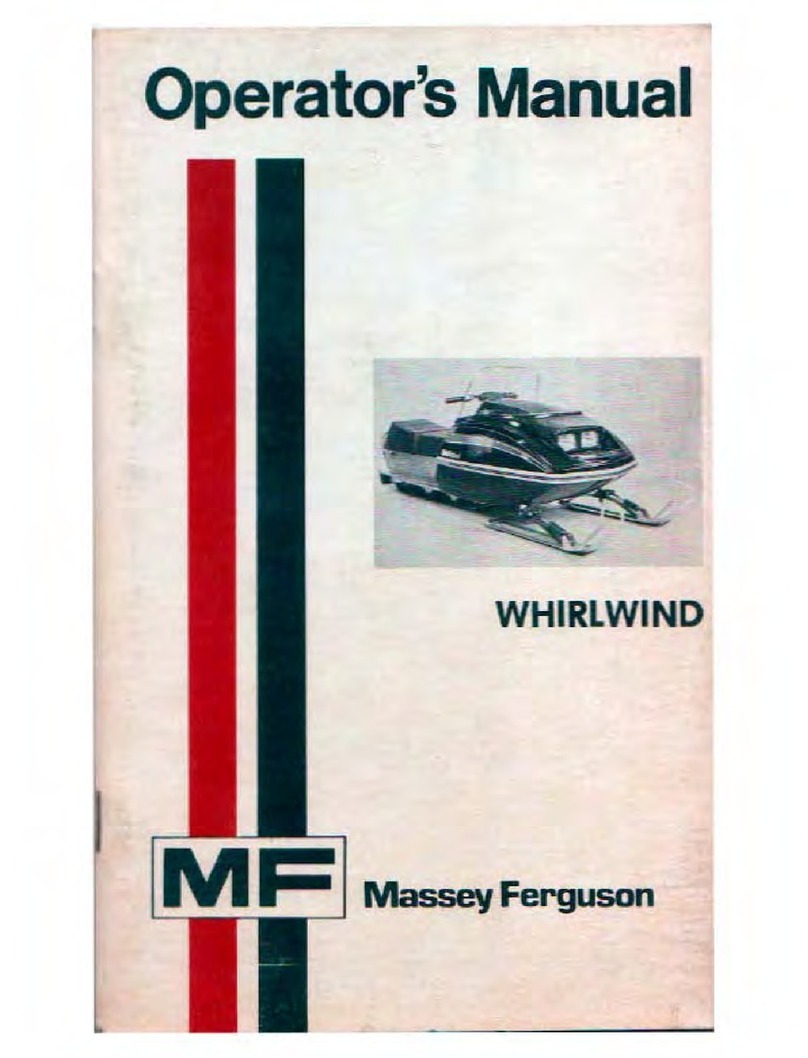
1-4
At altitudes above 5000 ft, clutch engagement RPM is
normally higher than the standard setting due to the
horsepower loss at altitude as opposed to what would
be seen for horsepower at sea level. The engine will
lose peak horsepower but will also lose horsepower at
engagement speed. For this reason, higher engagement
speeds are usually needed at altitude in order to attain
acceptable acceleration. This higher engagement speed
can be attained several ways. Some of the methods
will affect other characteristics of CVT operation, so
you must be careful what you change. Drive clutch
springs are the most common way to increase engage-
ment speed; however, by simply changing the cam
arms to a lighter weight from the heavier sea level cam
arm, you will gain some engagement speed.
Other more complicated methods exist such as
engagement notches and changing the position of the
cam arm center of gravity in relation to the roller. This
is called “tucking the weight” and can be used, but,
like the engagement notch, it can hurt belt life.
The driven clutch will also play a part in CVT tuning
for high altitude operation. A steeper helix (torque
bracket) angle in the driven clutch will mean a quicker
up-shift. A shallower angle will mean a slower up-
shift. If the up-shift is too quick, due to a very steep
helix, RPM will be pulled down under the peak operat-
ing RPM of the engine (where the horsepower is) and
performance will suffer. The engine may even bog. If
you have a helix that is too shallow, the engine may
over-rev or have poor acceleration. Usually, angles
shallower than the sea level calibrations work best.
The driven spring will also affect driven clutch tuning.
Tighten the spring, and RPM will increase. Loosen the
spring, and RPM will decrease. The spring should be
used to fine-tune and complement the helix selection.
Carburetor calibration changes for high altitude opera-
tion will have an effect on the CVT system and how it
operates. Understanding the basics of CVT operation
is important in order to make the correct high altitude
CVT calibration changes.
ENGINE
A normally aspirated engine will generate more horse-
power at sea level than it does at higher altitudes.
Many reasons for this are possible, but the biggest rea-
son is that the higher you go, less oxygen is available
for the engine to use during its combustion process.
Less oxygen means it needs less fuel to obtain the cor-
rect air/fuel ratio to operate properly. This is why the
fuel ratio has to be recalibrated. High altitude engines
operate as though they have a lower compression ratio.
This, along with less oxygen and less fuel, means that
the engine generates less horsepower.
The carbureted models will also have lower pressure
applied to the float chamber because of pressure
changes in the atmosphere between high altitude and
sea level. All of these characteristics will become more
evident the higher the altitude.
It will be necessary to make changes to the fuel sys-
tems (carbureted models) and drive systems that sup-
port engine operation as altitude changes.
TURBOCHARGING
Turbocharging is one method of compensating for loss
of air density that works extremely well when applied
to four-cycle internal combustion engines.
Exhaust gasses are directed through the turbocharger
turbine wheel which is attached to the compressor
through a common shaft. As the exhaust gasses spin
the turbine, the compressor is spun at very high RPM.
Inlet air is drawn into the compressor, compressed, and
routed to the intake manifold of the engine. Intake
pressure, therefore, is maintained at the optimum level
as altitude or temperature increases.
The turbocharger output must be regulated to maintain
the optimum manifold pressure throughout the
designed operating range. This is accomplished by
regulating the volume of exhaust gasses passing
through the turbine by controlling a diverter valve
(waste-gate) at the turbocharger turbine inlet. At lower
altitudes/temperatures, excessive exhaust gasses are
diverted past the turbine and into the exhaust down-
stream of the turbocharger thus limiting the compres-
sor output to maintain correct manifold pressure.
As altitude increases, the manifold pressure is held
constant by diverting less exhaust past the turbine, thus
increasing compressor speed. This will continue until
the waste-gate is completely closed at which time
manifold pressure will start to decrease much the same
as a normally aspirated engine.
The waste-gate is controlled by a spring/diaphragm
mechanism that is connected to the intake manifold by
an air line. A mechanical linkage connects the dia-
phragm to the waste-gate control arm.
Air is heated by friction and compression through the
turbocharger and air density is lost by heating the air;
therefore, an after-cooler is installed between the tur-
bocharger compressor and the intake manifold. This is
an air-to-air after-cooler that uses outside air directed
through a radiator-type cooler to cool the compressed
air prior to entering the intake manifold.
SUSPENSION
The different riding styles of the individual operator,
the varying snow conditions, and the type of terrain are
all factors that affect the suspension at high altitude.
Trail riding versus powder snow riding versus combi-
nation riding will all require different suspension set-
tings.
The normal setting for front ski suspension is as little
spring pre-load tension as possible for powder snow
riding allowing the skis to float across the snow with
the least amount of resistance. Trail riding will require
more spring tension to carry the varying load more
effectively. Many different settings and spring tensions
to consider exist when adjusting for riding style and
snow conditions.
NextBack Section
Table of Contents
Manual
Table of Contents
